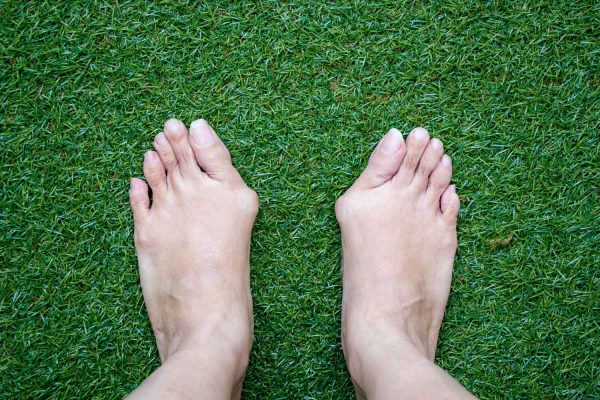When it comes to nursing home flooring, there are several factors that need to be considered to ensure the safety and well-being of the residents. Slip resistance, comfort, sound absorption, durability, easy cleaning, aesthetics, and hygiene are all crucial elements that must be taken into account. In this blog, we will discuss each of these factors in detail and explain why they are essential for nursing home flooring. We will also delve into the benefits of installing LVT flooring and how it can enhance the overall experience of both residents and staff. From understanding slip resistance ratings to choosing low-maintenance options, we’ve got you covered on everything you need to know about selecting the best flooring for your senior living community.
Table of Contents
7 Essential Health Factors for Nursing Home Flooring
Choosing the right flooring for nursing homes is crucial to ensure the safety and well-being of residents. Slip-resistance is a key factor to consider, as falls can result in serious injuries. Equally important is cushioning which reduces the impact on joints and minimizes injuries. Another factor that cannot be overlooked is noise reduction, loud noises can cause stress and discomfort for residents. Opting for non-toxic materials with low VOC emissions not only protects residents’ health but also contributes to a healthy environment. Moreover, ensuring easy cleaning of the flooring helps prevent infections from spreading while maintaining good hygiene practices. Lastly, aesthetic considerations should be factored in while still meeting health standards. By prioritizing these essential health factors while selecting nursing home flooring, we can ensure the safety, comfort, and well-being of our elderly loved ones.
Slip Resistance
Slip resistance is crucial when it comes to selecting flooring for nursing homes. Falls and injuries can be prevented by choosing flooring with a high coefficient of friction (COF) score, which measures slip resistance. Carpet, vinyl, and rubber are popular choices for their high COF scores. However, it’s essential to consider the type of footwear worn by residents and staff as certain shoes may affect the effectiveness of slip-resistant flooring. Proper cleaning and maintenance can also improve slip resistance over time, making it an important factor to consider when selecting nursing home flooring.
Comfort and Cushioning
Residents in nursing homes spend a significant amount of time on their feet, which can lead to discomfort and joint pain. Comfort and cushioning are key factors to consider when selecting flooring for nursing homes. Installing flooring with cushioning can reduce the impact on joints and prevent injuries, especially for elderly residents who may have limited mobility.
Carpet tiles or vinyl flooring with cushioned backing are popular options for nursing home floors as they provide good cushioning while maintaining slip resistance. It’s important to consider the texture of the flooring as well to ensure safety and reduce the risk of falls. Additionally, hypoallergenic materials that are easy to sanitize should be chosen to maintain a healthy environment for residents.
Sound Absorption
Sound absorption is a crucial factor when selecting flooring for nursing homes, as excessive noise can cause discomfort and even lead to negative health outcomes. Since elderly residents are typically more sensitive to sound, it’s important to choose materials that promote a quiet and peaceful environment. Carpeted floors are an excellent option for sound absorption, but they require more maintenance than hard floors. Rubber flooring is another good choice, offering not only sound absorption but also slip resistance and easy cleaning. Ultimately, the goal is to prioritize the comfort and well-being of nursing home residents by providing a serene environment that enhances their quality of life.
Durability
When it comes to selecting flooring for nursing homes, durability is a key factor to consider. The high traffic and heavy use of flooring in nursing homes can lead to wear and tear, making it necessary to replace or repair the flooring frequently. By choosing durable flooring materials such as vinyl, luxury vinyl, or ceramic tiles, nursing homes can ensure that their floors remain intact for longer periods of time. This not only saves money but also ensures a safer environment for residents by reducing the risk of tripping or slipping on damaged flooring.
Easy Cleaning
Ensuring cleanliness and hygiene is crucial in nursing homes to promote a safe and healthy environment for residents. It’s essential to choose the flooring that is easy to clean and maintain to prevent the spread of germs and bacteria. Smooth, non-porous surfaces such as vinyl, linoleum, and ceramic tiles are ideal choices as they can be easily cleaned and sanitized. Carpeted floors can harbor allergens and pollutants which can negatively affect the health of residents. Textured flooring surfaces can make cleaning difficult and leave spaces for dirt and bacteria to accumulate. Therefore, it’s important to prioritize easy cleaning when selecting flooring for nursing homes, along with slip-resistance properties to prevent falls among elderly residents.
Aesthetics
When considering aesthetics for nursing home flooring, it’s essential to keep in mind the primary objective of creating a safe and comfortable environment for residents. While visual appeal is important, functionality should always be the top priority. The right flooring materials can help reduce the risk of falls and injuries while also providing easy maintenance and hygiene control.
To achieve both safety and aesthetics, it’s recommended to choose slip-resistant flooring options that are easy to clean and maintain, such as vinyl or ceramic tiles. Opting for light-colored flooring with good color contrast against the walls can also aid in navigation for elderly residents with vision impairments. Additionally, choosing flooring with good acoustic insulation properties can create a more pleasant environment for residents. By prioritizing functionality over pure aesthetics, nursing homes can ensure a safe and comfortable space that promotes the overall well-being of its residents.
Hygiene and Infection Control
Maintaining hygiene and infection control is a crucial consideration when installing flooring in nursing homes. The constant foot traffic and potential spills can create an environment that is prone to bacterial growth, which is why materials such as vinyl and carpet tiles are popular choices for their ease of cleaning and resistance to germs. Additionally, proper installation techniques are essential for infection control, including using appropriate adhesives and sealing gaps between tiles. The color contrast between the floor and walls can also aid staff in identifying spills or stains quickly, further reducing the risk of infection spread. Overall, choosing the right flooring material and installation techniques can play a vital role in maintaining a hygienic environment for residents and staff alike.
The Benefits of Installing LVT Flooring
When it comes to choosing flooring for nursing homes, there are several factors to consider. One option that has been gaining popularity in recent years is LVT flooring. Not only is LVT flooring slip-resistant and durable, but it also requires low maintenance, making it an excellent choice for senior living communities. In addition to its practical benefits, LVT flooring also offers a variety of aesthetic options, allowing for design flexibility to match the nursing home’s decor. With its cushioned surface providing comfort for residents who spend a lot of time on their feet and non-porous material reducing the risk of bacteria growth, LVT flooring is a great investment for any nursing home looking to improve resident safety and well-being.
Understanding Slip Resistance Ratings for Nursing Homes
Slip resistance is crucial when it comes to selecting flooring for nursing homes. This is because the elderly are at a higher risk of falls, which can result in serious injuries. To ensure slip-resistant flooring, it is important to consider the Americans with Disabilities Act (ADA) guidelines for slip resistance. Keep in mind that different types of flooring have varying degrees of slip resistance, and regular maintenance and cleaning play a crucial role in maintaining it. Additionally, it is essential to consider the needs of residents who use wheelchairs or walkers while selecting appropriate flooring. Overall, consulting with professionals who specialize in nursing home flooring installation can ensure compliance with safety standards and prevent accidents.
Choose Low-Maintenance Flooring for Nursing Homes
Nursing homes require flooring that can withstand heavy foot traffic and equipment but also remain low-maintenance. Safety is a top priority when choosing nursing home flooring, with slip resistance being a key factor. The durability of the flooring is equally important to ensure longevity and reduce costly upkeep expenses. Noise reduction is another consideration, as loud noises can create a stressful environment for residents. Additionally, selecting visually appealing flooring options that create a warm and welcoming environment for residents can positively impact their well-being. Finally, comfort is essential when it comes to reducing fatigue on joints and minimizing discomfort for those who spend a lot of time on their feet. Overall, choosing low-maintenance flooring options that meet these criteria will benefit both the nursing home staff and residents.
Durability of Flooring in Senior Living Communities
When it comes to selecting flooring for senior living communities, durability is a crucial factor to consider. The constant foot traffic, mobility aids, and equipment used in these facilities can quickly wear down floors that aren’t built to last. Choosing durable flooring options that can withstand heavy use is essential to ensure longevity and reduce the need for frequent replacements. In addition to being cost-effective, durable flooring also contributes to the safety and well-being of residents by reducing the risk of accidents caused by worn or damaged floors.
Acoustics & Comfort in Nursing Home Floors
Maintaining a comfortable and quiet environment is crucial for the well-being of nursing home residents. That’s why acoustics and comfort are essential factors to consider when choosing flooring options. Choosing materials with good sound insulation properties can help reduce noise levels in busy nursing homes, allowing residents to enjoy a more peaceful atmosphere. Additionally, cushioned flooring options can provide added comfort and prevent falls. Slip-resistant flooring is also important to avoid accidents. It’s crucial to prioritize the specific needs of residents, such as those with allergies or mobility issues, while ensuring that hygiene standards are maintained through easy-to-clean and low-maintenance flooring options. Working with experienced professionals who understand the unique requirements of nursing homes is recommended to ensure the best results.
Consider Cleanliness & Hygiene with Nursing Home Flooring
Maintaining a clean and hygienic environment is crucial in nursing homes to prevent the spread of infections and diseases. One way to achieve this is by choosing flooring materials that are easy to clean and sanitize regularly. Non-slip surfaces also play a vital role in reducing the risk of falls and injuries, which can be especially dangerous for seniors. Additionally, it’s essential to avoid materials that emit harmful chemicals or odors, as they may compromise the air quality and adversely impact residents’ health. By prioritizing cleanliness and hygiene in flooring choices, nursing homes can ensure their residents’ safety and well-being.
Conclusion
Choosing the right flooring for nursing homes is crucial to ensure a safe and healthy environment for its residents. The seven essential health factors to consider when installing flooring in nursing homes include slip resistance, comfort and cushioning, sound absorption, durability, easy cleaning, aesthetics, and hygiene and infection control. LVT flooring is an excellent option that offers all these benefits while also being low maintenance. Understanding slip resistance ratings and choosing durable flooring with good acoustics and comfort can make a significant difference in the well-being of nursing home residents. Don’t compromise on cleanliness and hygiene when it comes to selecting the right flooring for nursing homes. To learn more about the best flooring options for senior living communities, read our detailed blog on the topic.





